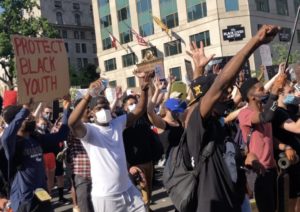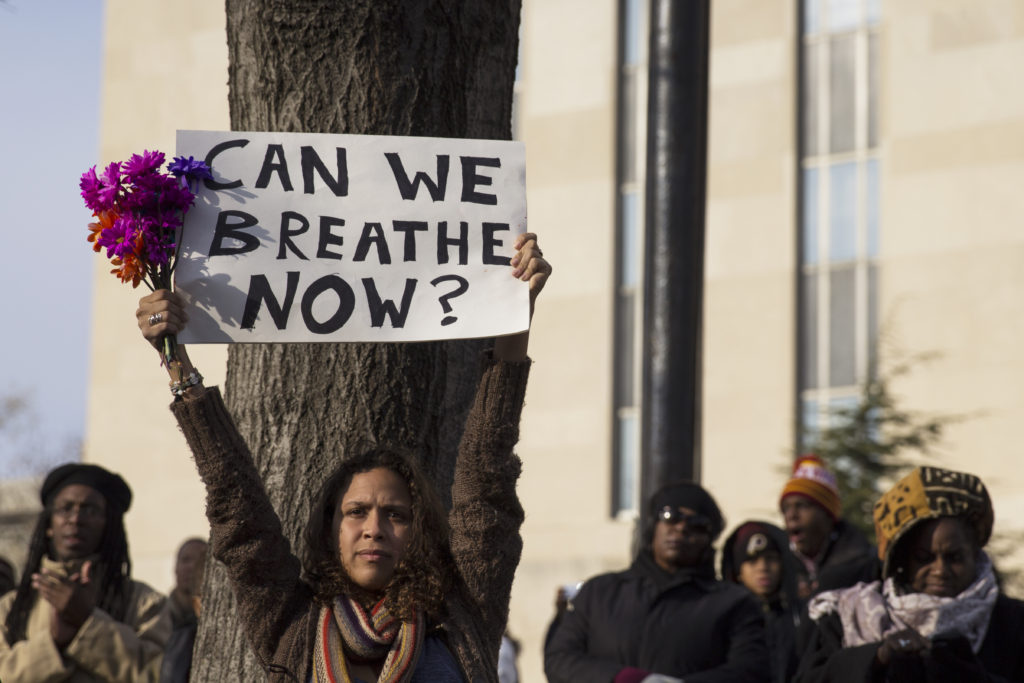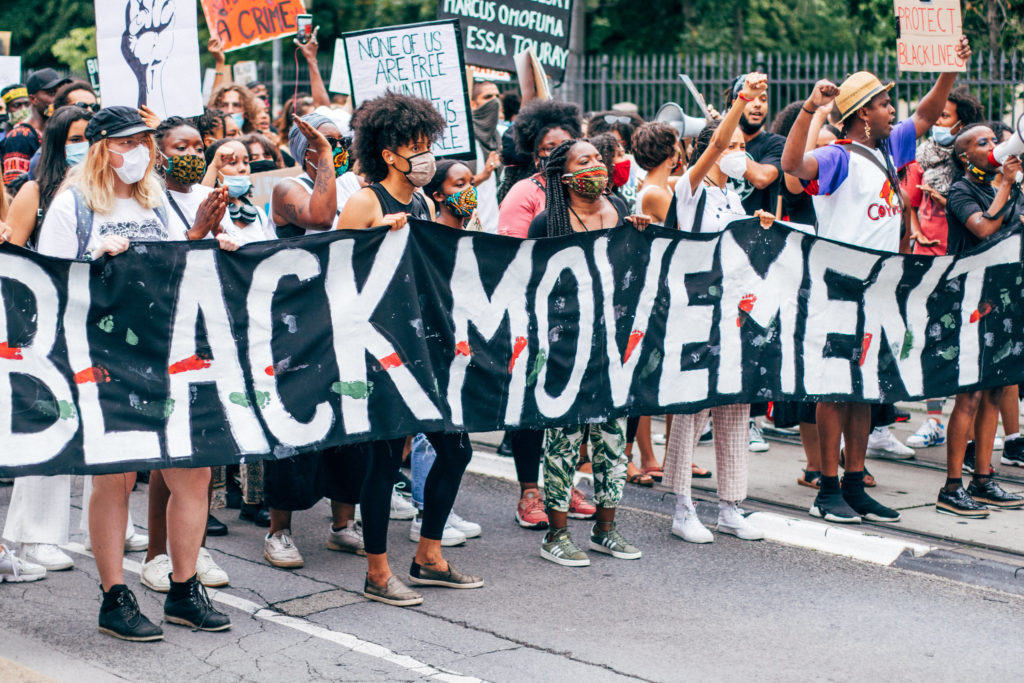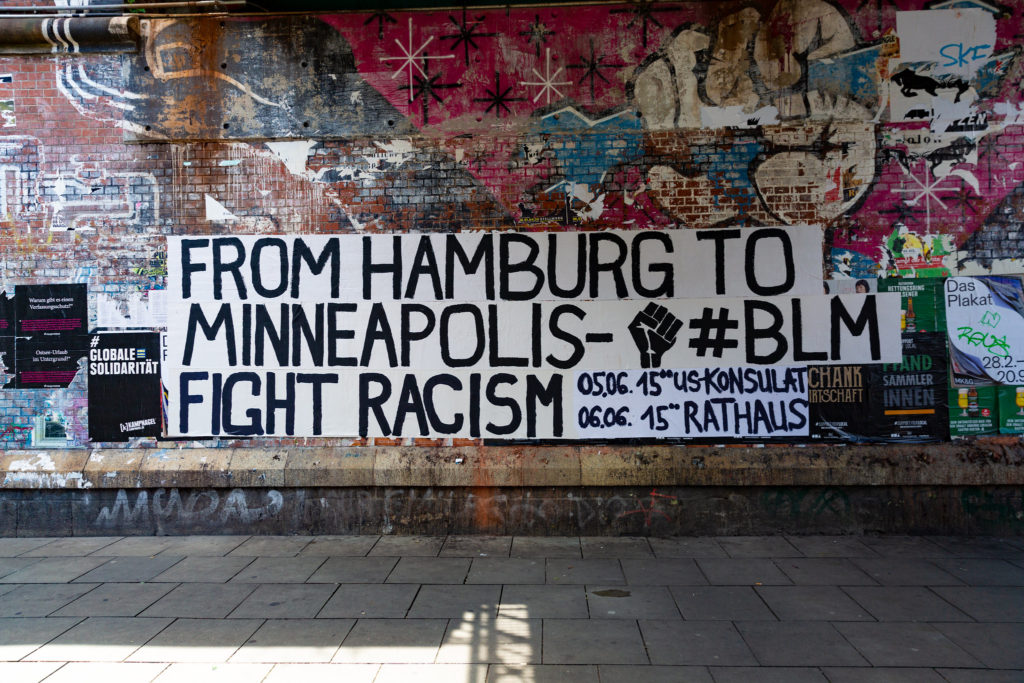Systemic inequities, a global pandemic, and violence from both state and private actors have created the perfect storm. Black, Asian, Indigenous, migrant, Roma and racialised communities around the world have responded to the present moment with determination, hope and in concert, fighting not just to survive the public health and economic crises, but rising en masse in solidarity protests following the leadership of young Black activists in the U.S.
The challenges of addressing structural racialisation[1] vary by the cultural, historical, legal and philanthropic dynamics of each region. Yet, right now, slow-moving efforts to shift philanthropy toward racial justice can advance significantly. Burgeoning efforts can also flourish with greater support.
Although our racial justice movements have faced obstacles and backlash, escalating since 2016, they have also generated consciousness, action and institutional change in a few weeks that would have been unthinkable a year ago. U.S. funders working with a racial justice lens have helped to support a sustained and effective racial justice movement that has been developing for decades but which has grown exponentially larger and more sophisticated in the seven years since Black Lives Matter was founded. According to data from Candid, within the month since protests began, as well as responding to needs elevated by the pandemic, pledges of racial equity grantmaking from major foundations in the U.S. exceeded $3.7 billion, which in one month is roughly 20 times the total in all of 2019.
…there cannot be a one-size-fits-all path to move funders to increase racial justice support.
While U.S. grantmaking to racial justice still certainly has significant room to grow to match needs, those decades reveal numerous lessons about what works and what doesn’t. The Philanthropic Initiative for Racial Equity (PRE) centres our exploration in each country by learning first from activists and NGOs, then engaging with a range of change agents and others in philanthropy. Through this process and over 25 years’ engaging internationally, I’ve witnessed or learned of successful efforts, as well as those that have diffused, diverted or delayed progress.
The argument for a racial justice lens
The racial justice agenda includes both reducing disproportionate harm and changing power relations with dominant community institutions. There is no question that the Coronavirus hits the most vulnerable communities in any country hardest, both in health and economically. Data from the U.K., Canada, Brazil, Hungary, France, Italy, Germany and Austria reveal that, like the U.S., there is disproportionate illness and death among racialised communities. State responses to the pandemic have also deepened the existing criminalisation of certain communities. Entrenched occupational segregation and labour discrimination are core sources of economic and health disparities. Across countries, there is over-representation of racialised people in higher-risk occupations, including health workers, delivery or transportation, grocery or other essential stores, with predictable consequences. In the U.K., 60 per cent of health workers who have died come from racialised communities, typically Black, Asian and minority ethnic groups. Scapegoating, often leading to vilification and violence, and poor living conditions among racialised communities have exacerbated the problem.
While crises such as the pandemic or shocking experiences like witnessing the police murdering people have certainly sparked greater attention to racial injustice worldwide, the newly awakened have somewhere to go because Black and other racialised community members have long battled similar abuses. Likewise, encouraging responses from some funders may seem like they’ve jumped into discussions of racial equity overnight. In fact, the work is often the result of sector readiness that has been years in the making.
In the U.K., a range of change agents have recently sought to advance more support for racial equity – between the Funders Alliance for Race Equality Alliance, a new DEI funders coalition; early stage work of the Association of Charitable Foundations reflected in a recent DEI report; brap, a Birmingham-based NGO which produced a report outlining civil society’s need to address race more explicitly; a more informal network of people of colour or diverse philanthropic staff; and perhaps most visibly – and arguably most effectively – the #CharitySoWhite campaign. Even as recently as January 2020 these conservations were more often about ‘race equality’ or only beginning to move to ‘racial equity’ but the combination of these efforts, along with a group of funders talking about economic and climate justice – and the confluence of the COVID crisis – resulted in the considerable jump forward with the pooled Resourcing Racial Justice fund, which is led by a coalition of activists of colour and explicitly aimed at investing in organisations led by people of colour with an emphasis on reparative justice and building power.
‘We’re really wary that we could be in a place where funders could just kind of tick a box that, “Oh, we’ve done race, that’s done.”’
Clearly, there cannot be a one-size-fits-all path to move funders to increase racial justice support. Where the state supports social welfare and NGOs, there is still inadequate support for human rights organising, requiring philanthropy to fill that gap. In Latin America, as Graciela Hopstein notes, there is relatively little grantmaking by foundations, creating a vacuum of support for civil society organisations and social justice movements in general. The same is true of countries in other parts of the world.
Philanthropy is at different stages of development in different countries, but the reasons for using a racial justice lens – not merely racial equity[2] – apply and are just as compelling.
‘A racial equity lens separates symptoms from causes, but a racial justice lens brings into view the confrontation of power, the redistribution of resources and the systemic transformation necessary for real change,’ states Grantmaking with a Racial Justice Lens: A Practical Guide.
I recently interviewed more than a dozen funders, philanthropic support organisations, intermediaries, and activists, and engaged several hundred more in virtual sessions across Europe, North and Latin America. Their insights, combined with findings shared in Grantmaking with a Racial Justice Lens, raised transferable lessons that are relevant in response to the COVID pandemic and for the long haul across most societies.
Lesson 1: Funding organisations led by affected, racialised communities is the most effective strategy for both immediate and long-term goals.
NGOs led by those from affected communities and that address power differentials are the most effective recipients of philanthropy aimed at eradicating racial disparities. These organisations have worked hard to build authentic, constructive relationships in communities that they themselves belong to, and many funders recognise these assets in even small or emerging organisations. They take less time to ‘translate’ community needs, strengths and strategies because they don’t have to do it twice – once for the intermediary distributing the money and again for the funder. Trust is a major issue for marginalised groups. In Italy, Claudio Tocchi, who works on funding through the City of Torino, noted that in the early days of the crisis, the City had to rely on the community associations that were part of migrant communities for their communication, reach and credibility. ‘Migrants who have been hearing from so much of the community that is bigoted against them,’ he said, ‘it’s not as if they are immediately going to have trust about information coming out from other institutions.’
Lesson 2: Because inequities stem from power imbalance, fund organisations that are building power by campaigning for racial justice are needed.
It is simply not enough to fund grassroots organisations to provide services. Efforts to expand access to the tools of citizenship, to challenge the stereotyping of racialised communities in the media, or to ban and punish discrimination are all as valid as delivering meals, medicine or cash to those in need.
In these times of crisis and uncertainty funders have been given a compelling opportunity to meet the moment of both the global pandemic and the solidarity movement to tackle anti-Black racism and other forms of racialised bigotry.
In Canada, for example, a coalition of Asian-serving organisations have combined forces to advocate for data that provides actionable insight into the experiences of the full range of Asian immigrants and Asian Canadians. By working together across nationality and language, Asian communities are strengthening their ability to act together on important policy matters. Asian groups are also undertaking significant collective education to address anti-Blackness, preparing larger numbers to support Black demands.
Philanthropists who are not ready to embrace community advocacy, protest and direct action can contribute to efforts like voter registration, citizenship classes and legislative change.
Lesson 3: Philanthropists should add their voices to those of advocates for collecting racial and ethnic data.
Racial justice cannot be accomplished without trustworthy data that grounds arguments for practice and policy change. While groups like the European Network Against Racism have advocated for racial and ethnic data collection for decades, COVID’s visibly disparate though not properly tracked impacts provides the opportunity and highlights the need for this.
Beyond understanding the pandemic’s critical differences in health and economic impacts, data is needed to address disproportionate policing since the outbreak of COVID, as well as disparities in employment and other arenas. According to Lanna Hollo of Open Society Justice Initiative, French activists and communities were demanding direct access to a larger set of police data in response to the increase in fines and jailing of Black and Arab community members for supposed violations during the lockdown phase of the pandemic: ‘One of the things we’re actually asking is access to the figures… there’s a clear disproportionate targeting.’

A Black Lives Matter protest in Washington D.C. on 16th Street near the White House, where the city officials have renamed ‘Black Lives Matter’ Plaza. Photo credit: Lori Villarosa
Lesson 4: Avoid the tendency to fund efforts that simply strengthen dominant organisations to do ‘community outreach’ or expand their DEI efforts.
Especially in response to the kind of massive needs that arose with the COVID pandemic, it can be tempting for funders to funnel support through larger groups led by members of the dominant community under the rationale of their greater capacity to work at the scale required. However, larger organisations often have their own learning curve on racial justice matters.
Other funding is often focused on DEI efforts to diversify and strengthen dominant organisations’ cultural competency, which may well be needed, but at a time of scarce resources, funders must consider whether the smaller racialised NGOS are in fact subsidising the capacity building of the more financially established ones in a continually extractive and inefficient pattern.
It’s important to balance this approach with more direct support and power building among affected communities. Working entirely through existing infrastructure, rather than supporting new infrastructure, can exacerbate or reinforce funding inequities. Funding constituent groups directly also means that their work adds to community capacity over time rather than extracts it for the benefit of large organisations with no real links into the communities in question.
Lesson 5: Do look to intermediaries that have come from communities for added reach, but use them to expand, not replace, broader and deeper direct relationship building.
Funders that have not historically been in a deep relationship with the racialised communities in their region may turn exclusively to a few more established Black or other racialised organisations, possibly themselves more elite and removed from the communities they purport to serve.
Selma Moreira of the Baobá Fund for Racial Equity, a Brazilian intermediary funder focusing on support for Brazil’s Black community, launched an emergency RFP of small grants for Black NGOs in response to COVID-19, recognising the particular vulnerability of their constituencies. They not only reach more deeply into the favelas, but also support the Black-led community organisations reaching homeless people or those in more remote areas.
A racial equity lens separates symptoms from causes, but a racial justice lens brings into view the confrontation of power, the redistribution of resources and the systemic transformation necessary for real change.
Allyne Andrade, of the Brazil Human Rights Fund, another intermediary, said that within a week of posting an Emergency RFP when the pandemic started, they received 2,300 proposals requesting more than 22 million Reais. She noted, ‘A significant number of the proposals are from Indigenous, favelas, and Quilombo communities’ as well as homeless people, small farmers, and LGBTQ people, ‘really, those are the people who are suffering more, and they don’t have access to the big donors.’ In addition to being more accessible and in relationship with affected communities, the Brazil Fund was able to create flexible lines of giving such as 5,000 Reais for human rights defenders for whatever they might need, more mobile phone support, rent or whatever it might take to enable them to continue their critical work.
Supporting intermediaries or pooled funds – especially those that bubbled up from community leadership rather than being created by funders – can be an effective way to expand a foundation’s reach into racialised communities, enabling smaller grants than a particular foundation may be able to process. However, it is also important that funders use that engagement to deepen their own learning, to broaden their networks and ideally to add to their ability to make more direct grants in the future.
Nusrat Faizullah of Resourcing Racial Justice noted, ‘we’re really wary that we could be in a place where funders could just kind of tick a box that, “Oh, we’ve done race, that’s done.”’ She goes on to note that the ultimate goal is to open a foundation’s general, and usually larger, funding pools for racial justice as well.
Lesson 6: Funders have greater opportunity to learn from each other and learn from movement leaders than they have ever had.
Of course, there are also progressive networks and funder associations to learn from, which are at various stages of development toward more explicit racial equity or racial justice lens.
Lessons, tools and peer support abound. Foundations needn’t fully recreate the wheel nor go it alone. There is a vast library of resources on approaches for racial equity and racial justice regardless of your institution’s starting point and, while the pandemic has prevented in-person convenings and trainings, the new virtual reality has actually opened up much greater opportunity to build transnational learning communities reducing the travel and expense that has often been a barrier.
On a single day last month – June 23 – ACF held a webinar on Foundations, COVID, and Racial Disparity: A Time for Urgent Action with more than 175 attendees across the U.K., the largest participation other than their annual conference; Ariadne held a webinar on what COVID indicates about structural discrimination in Europe; and Canadian philanthropy’s first ever Racial Equity and Justice in Philanthropy Funders’ Summit, convened by The Circle on Philanthropy and Aboriginal Peoples in Canada, Vancouver Foundation, and other partners, was sold out with more than 500 attendees.
Funders seeking to deepen their own understanding and application of a racial equity and justice lens will find growing interest from the likes of EDGE Europe and the Brazil Social Justice Philanthropy Network. More broadly, and while still at earlier stages of their own review of racial equity, DAFNE and WINGS, as well as a number of U.S.-based funder networks that engage globally, including Hispanics in Philanthropy, which works in Latin America as well as U.S., and ABFE: A Philanthropic Partnership for Black Communities, which is working increasingly with the African diaspora, particularly in the Caribbean.
Foundations needn’t fully recreate the wheel nor go it alone.
By sharing some of the promising starts, I am by no means underestimating the challenges that exist. Having spent nearly three decades working with U.S. funders in deepening their work to combat structural racism, I am well aware of the denial, complacency, resistance, confusion, elitism and lack of accountability that exists within the philanthropic sector.
In these times of crisis and uncertainty, however, funders have been given a compelling opportunity to meet the moment of both the global pandemic and the solidarity movement to tackle anti-Black racism and other forms of racialised bigotry. We can take our leadership from the historic momentum that activists have generated in the wake of morbid chaos. We can only break through to a new world together.
Lori Villarosa is the Founder and Executive Director of the Philanthropic Initiative for Racial Equity (PRE), which works with grantmakers and NGOs to tackle structural racism. Many thanks to Rinku Sen, PRE Senior Fellow, for her editorial contributions to this article.
Footnotes
- ^ By racialised communities, I refer to people affected by anti-Black racism, Islamophobia, xenophobia, and discrimination against Travellers, Roma, and Indigenous people. These are distinct forms of bigotry, but all expressed in structural exclusion based on religion, ethnicity and race (sometimes all three), constituting structural racialisation.
- ^ From Grantmaking with a Racial Equity Lens: A Practice Guide. Philanthropic Initiative for Racial Equity, Dec 2019: A racial equity lens requires analysing race, ethnicity, and other relevant disparities, considering the structural root causes of problems, and naming race explicitly in problems and solutions. A racial justice lens goes further to integrate history, an affirmative vision of a fair society, explicit focus on building civic, cultural, and political power for those most impacted and foundational, high-leverage systemic advances.








Comments (0)